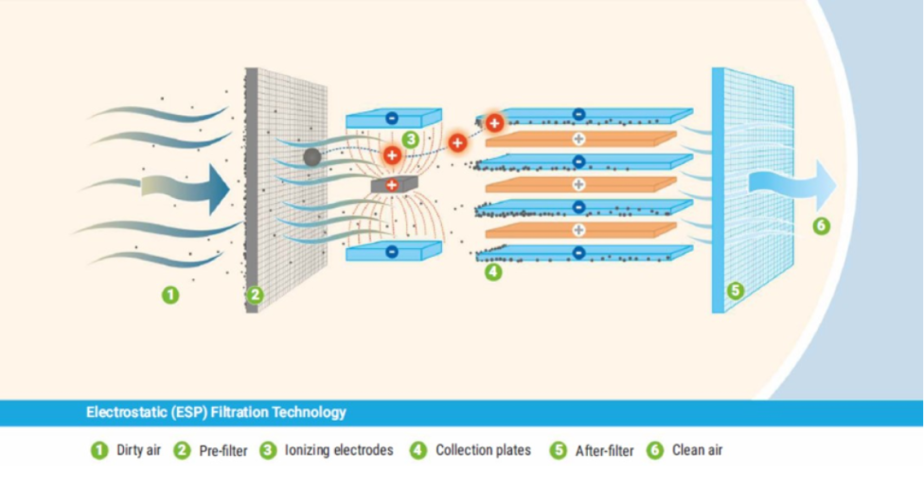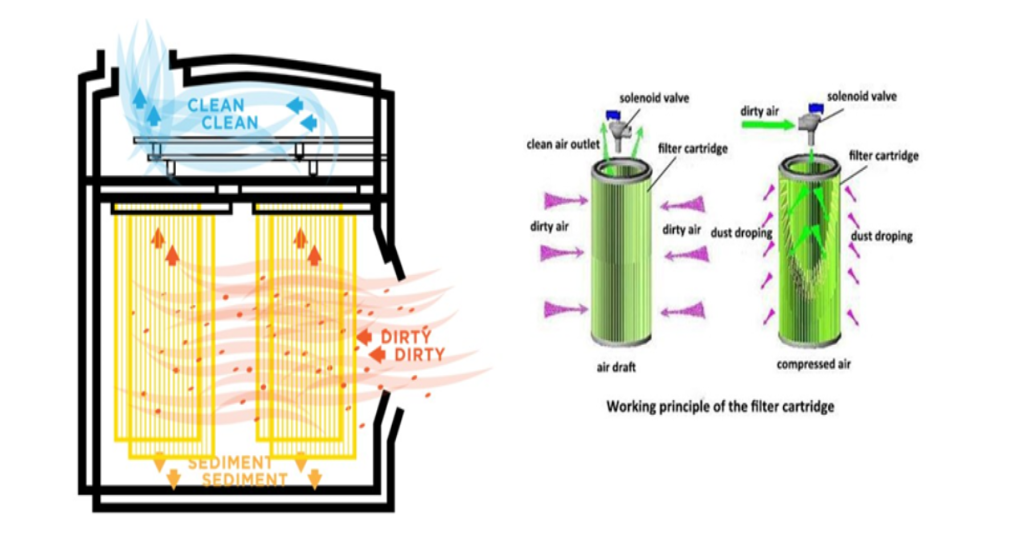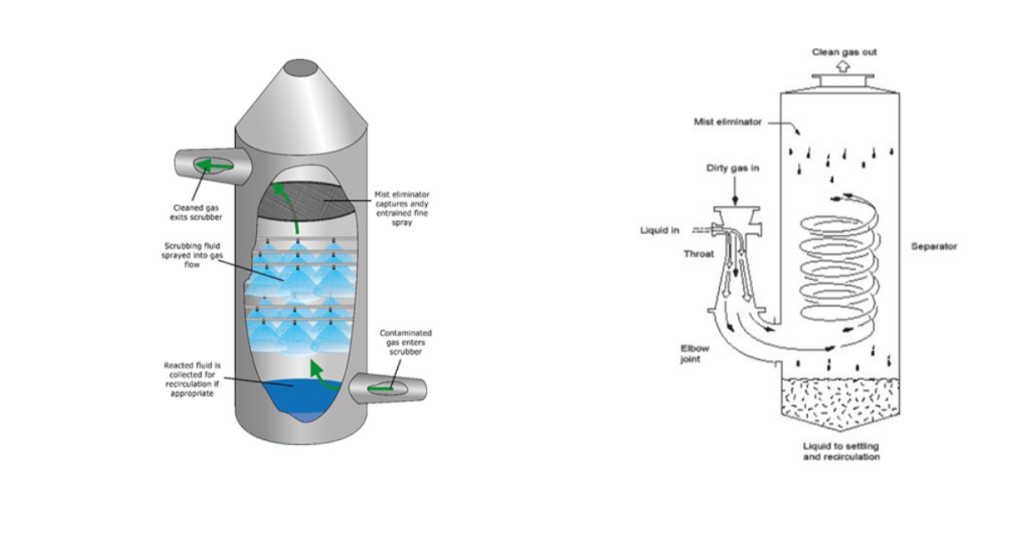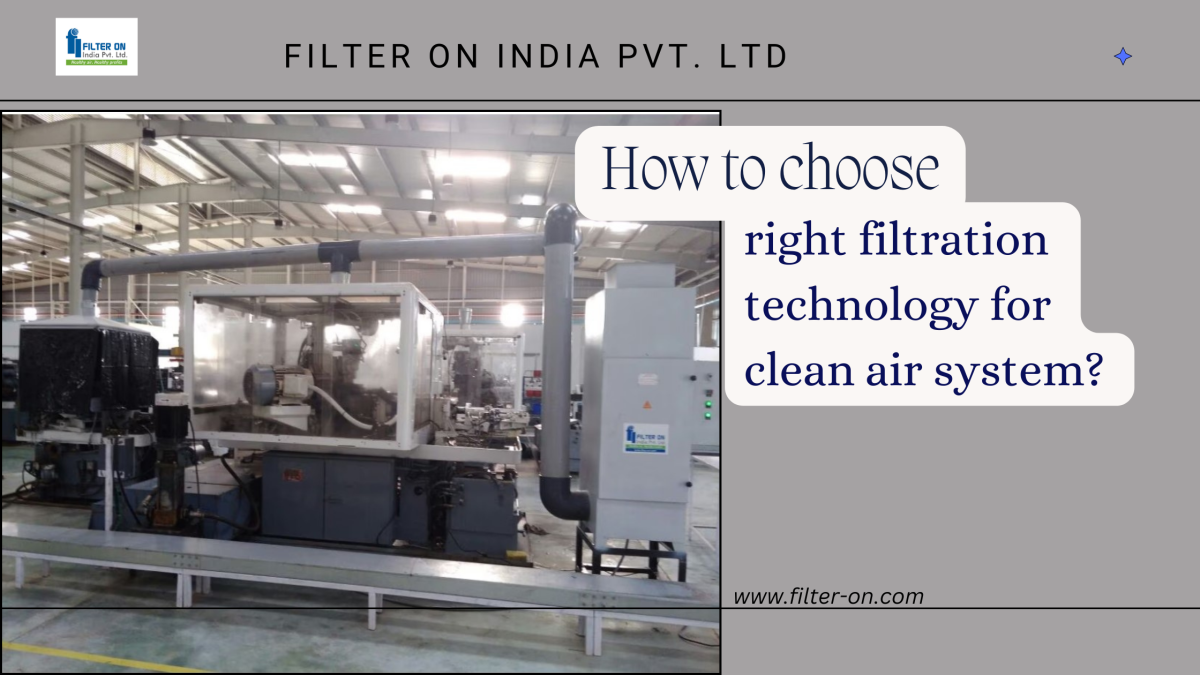Selecting the right filtration technology is a critical task for anyone. In a previous article, we discussed the importance of airflow in pollution control. Now we will look into the filtration technology we use in the clean air system, which is these:? What are their advantages and disadvantages? Which applications are suitable or unsuitable for these technologies? How do you wisely choose the best technology between them, etc.? The answers to all these questions are the focus of this article.
When we talk about filtration technology, we come across the three technologies that Filter On India offers, namely:
- Electrostatic Precipitation Technology
- Media Filter / Cartridge Technology
- Wet Scrubber and Venturi Scrubber Technology
Electrostatic Precipitation Technology: The Advanced Cleaning Technology
Electrostatic precipitation (ESP) technology is a two-stage electrostatic air filtration system used to filter fumes, smoke, mist particles, and dust particles. Filter-On's ESP system uses a metallic and washable filter element to release smoke-free, clean air back into the environment. This technology is effective in handling the smallest particles (0.01 micron to 10 micron) and offers various models to suit various applications, locations, and performance requirements. The ESP system provides high efficiency and excellent return on investment.
BENEFITS:
- Zero Replacement Cost
- Low pressure loss saves running costs
- High efficiency even for submicron particles

Key Applications of Electrostatic Precipitation Technology:
- Dry Fumes like Soldering, Laser Marking, Spot Welding, Wave Soldering, manual welding, Robotic Welding & SPM etc.
- Oil Mist Filtration for small CNC machines like ball pen tip-making machines, CNC grinding machines, 5 Axis grinders, Sliding Heads, Gear Cutting / grinding machines, Hobbing machines, Cold Forging, Nut Formers
- Kitchen fumes filtration
Limitations:
Needs manual cleaning periodically. Thus not suitable in high dust concentration applications like plasma cutting, dry grinding, laser cutting etc. Also, it is not recommended for applications which are fire sensitive e.g. aluminum dust or flammable aerosols. One more application is corrosive acidic fumes, where this technology is not suitable.
Media Filter/Cartridge Technology: The Fine Technology
During various processes such as plasma cutting, laser cutting, grinding, polishing, welding, laser marking, graphite machining, woodworking dry dust and solid particles are generated so this is a simple system that can be easily deployed for the separation of the dry dust and solid particles generated from above processes. Dust-laden air passes through a cartridge filter, capturing fine dust particles, allowing clean air to pass through, ensuring a healthier environment.. In this system, filter cleaning is automatically achieved through reverse pulsed jets of compressed air, and the dust gets accumulated in a bottom tray, which can be easily removed and cleaned.

BENEFITS:
- Automatic Cleaning:Routine maintenance of filters is very easy
- High efficiency
- Works effectively for heavy dust loads
Key Industrial Applications of Media Filter/Cartridge Technology:
- Welding fume extraction
- Grinding Dust Collection
- Plasma cutting fume extraction
- Melting furnace fume extraction
- Saw dust collection in the woodworking industry
Limitations:
This system is not found effective in applications where the pollutant has some wet/liquid part like oil or grease. It clogs the filters early making the system ineffective. Also, if there are possibilities of any sparks/splatters or hot metal particles entering the system, it may cause the fire as the filter material in most of the cases is fire sensitive.
Wet/Venturi Scrubber Technology:
Wet scrubbers are a simple, yet powerful tool for removing particulate matter and other contaminants from gas streams. They work by capturing particulate matter in liquid droplets, which are then collected and dissolving or absorbing the pollutant gas. The efficiency of a wet scrubber depends on the power input and the use of a mist eliminator. Wet scrubbers are typically the only air pollution control device that can remove both pollutants. Water is the most common solvent used to remove inorganic contaminants, and other liquids can also be used as absorbing solutions. The chemical composition of these solutions can change the overall charge, making it crucial to choose the scrubbing liquid that will bind most effectively to remove contaminants from the gas. For industrial air pollution applications, wet scrubbers are designed with premium materials and quality thermoplastic construction, as well as UV-resistant PVC, polypropylene, and polyethylene for outdoor installations.

Venturi Scrubber Technology:
Industrial processes often generate hazardous submicron particles, welding fumes, odors, and other water- or chemically-soluble fumes and vapors. The Venturi scrubber is designed to capture these pollutants through adsorption, using energy from the inlet gas stream to atomize the liquid being scrubbed. The section comprises a converging section, a throat section, and a diverging section, with exhaust gas entering the converging section and liquid entering the throat or entrance. The exhaust gas moves at high velocities in the small throat section, shears the liquid from its walls, producing tiny droplets. Particle and gas removal occurs in the throat section, and the exhaust stream exits through the diverging section. Venturi scrubbers can collect both particulate and gaseous pollutants. Wet scrubbers, which use water as a solvent, can also be used to remove inorganic contaminants. The Caustic solution (sodium hydroxide) is the most common scrubbing liquid used for acid-gas control.
Working Principle:
It works on the following principle: it creates a differential between higher velocity gas and the highly energetic turbulence nature of the liquid, which creates droplets, which helps in capturing the contaminants at a faster rate and making them a highly concentrated slurry.
Features:
- A simple design for the introduction of scrubbing liquid.
- Fixed Venturi throat dampers
- The design does not involve mesh pads; instead, it contains a cyclonic separator for mist elimination
- In order to minimize the consumption of water, it is designed with separate recirculation systems
Advantages :
- Highly capable of removing pollutants like Corrosive Fumes, Dust, VOCs & Gases. Ability to handle high temperatures
- The design can be customized based on the application with less cost. Can reduce the high moisture streams
- Ability to neutralize dust and gasses that are flammable in nature Less maintenance
- Operates with higher efficiencies (in case of Venturi Scrubber)
Key Industrial Applications of Wet Scrubber Technology:
- Acid Fumes
- Flammable Dust Extraction
- Gas Absorption like Ammonia / H2S / SO2 etc.
Limitations:
Wet Scrubbers need a lot of water. So it can't be used in water scarce regions. Also, the pollutants get absorbed in the water and this water cannot be drained directly anywhere. You need to have an Effluent treatment facility within your plant. In absence of ETP, wet scrubbers cannot be used.
One more limitation is regarding the size. Wet scrubbers are quite big in size as compared with other filtration systems.
Venturi Scrubbers need very high power (highest among all other technologies)
How do I select the right filtration technology?
We have discussed in detail various technologies of filtration, so now which technology is ideal for your application?
Choosing the best technology for your application is very important when you have quotations from various industrial players. It may include electrostatic precipitation technology, cartridge technology, and wet/venturi scrubber technology. All these technologies have advantages as well as some limitations, but when you look at the long run, You must look into the answers to some of the questions first.
- Whether this technology is suitable for my application?
- What is the power cost of using the filtration technology?
- What is the replacement cost & frequency of replacement?
- What is the maintenance cost for filtration technology?
All these questions are very important in the selection of the filtration technology for your application, so Filter On India can give you expert advice and help you decide which is the right filtration technology for your application or combinations of one or two of the technologies for your application.
Benefits of choosing the right filtration technology for your applications:
- Cost saving
- Long-Term Working
- Power Saving
- Low Maintenance Cost
- Efficiency in Working
Filter On India has been working towards “Mission Zero Pollution” for the last 40+ years as a clean air solutions partner for industries. Filter On has 70+ clean air solutions, so you can contact us for more information about our solutions. You can reach us through the web or visit us at Pune, Delhi, Bangalore, Ahmedabad, Hyderabad or Chennai locations.


